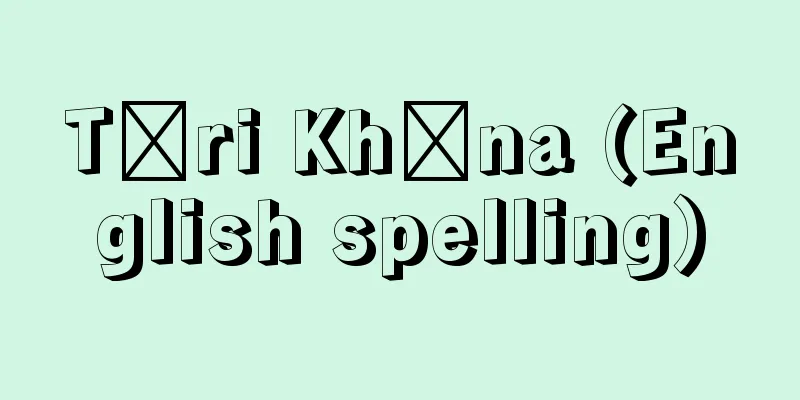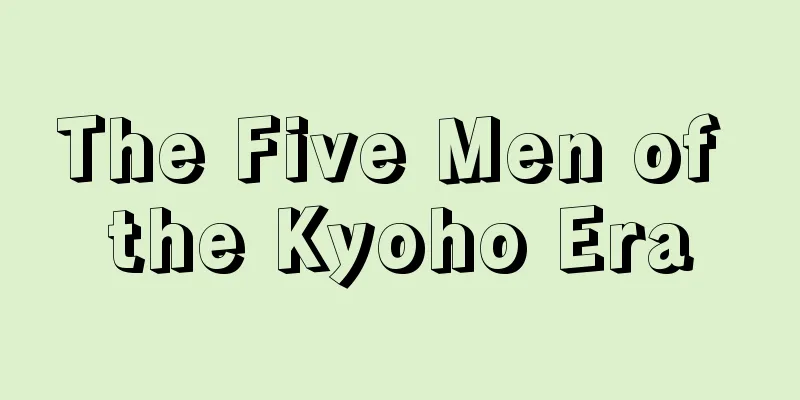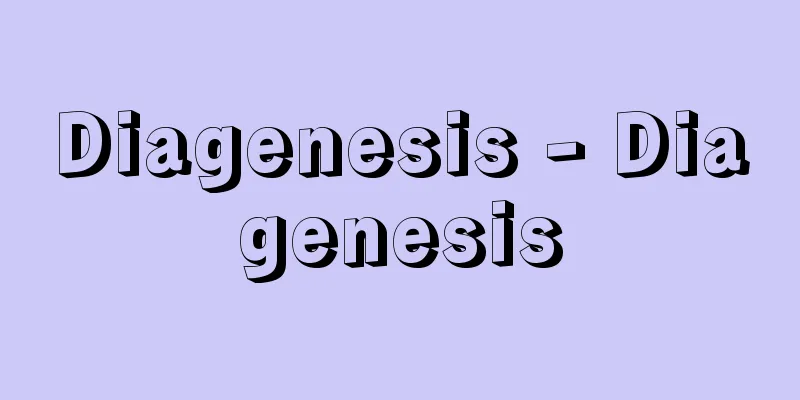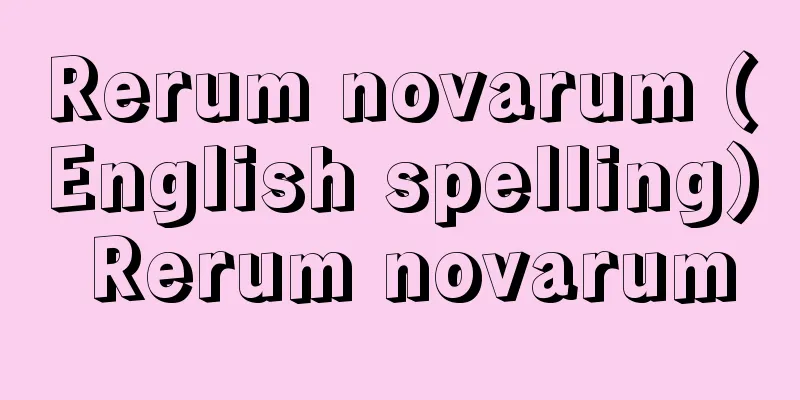Subject - Today

|
It refers to a unit or group of educational content that should be taught to children and students at school. In English, it is called a subject. In today's Japan, there are "subjects" such as Japanese language, social studies, arithmetic (mathematics), science, music, art and crafts (fine arts), home economics, physical education, and foreign languages. In high school, the units into which these subjects are further subdivided, such as physics, chemistry, biology, and earth science in science, are called "subjects." A subject is also defined as the systematic organization of human cultural heritage, such as science, technology, and art, as educational content, taking into account grade-level development from an educational perspective. However, the classification and organization of subjects reflects the history of schools in each country, as well as the political and social conditions, and are not necessarily logically organized. [Ryozo Ito] HistoryGenerally, the origin of school subjects can be traced back to the Greek seven liberal arts, which consisted of the three sciences of grammar, rhetoric, and dialectics, and the four sciences of arithmetic, music, geometry, and astronomy. The foundations of these seven liberal arts were reading, writing, and arithmetic (the three R's), and physical education was also considered an important subject. Education based on these seven liberal arts passed through ancient Rome and the Middle Ages, and during the Renaissance, it changed to an education centered on languages and classics, with Greek and Latin as the basic subjects, and this tradition continued in Western Europe until the 20th century. Later, in the 17th and 18th centuries, with the development of natural sciences and the emergence of ideas of panphilism and encyclopedism, such as "teaching everything to everyone," geography, natural history, and physics were added to the list of subjects in addition to the seven liberal subjects and language subjects. Modern subjects were established during the development of the national education system from the 19th century onwards. With the Industrial Revolution, the establishment of the nation-state and the development of modern sciences, Japanese language, arithmetic, science and history became the main subjects taught in schools for all children of the nation, including not only the ruling class but also the common people. Civics, art, music and technology were also introduced and developed. [Ryozo Ito] JapanIt is said that the National University, established under the Taiho Code, adopted a division of subjects based on the Chinese Six Arts (rituals, music, archery, calligraphy, and mathematics), but in the early modern period, Chinese classics, centered on Confucianism, became the main subject for the ruling class. On the other hand, from the mid-Edo period onwards, temple schools for the common people flourished, where reading, writing, and abacus were taught. Japan's modern school system after the Meiji era was modeled on the Western model, which had already achieved a high level of modernization. The Western-style curriculum contributed to the development of science, technology and industry in Japan, particularly in the subjects of mathematics and natural sciences, but in liberal arts subjects such as Japanese language and history, moral education was at the core and served to educate citizens in a nationalistic manner. In the new curriculum after World War II, social studies, which combined moral education, history, geography, civics and other subjects, became the core subject, and the content of each subject was designed to emphasize the life experiences of children and students. [Ryozo Ito] compositionIn elementary school, Japanese language, social studies, science, etc. may be taught as a combined subject because children's cognitive development is still underdeveloped, as in the case of social studies and science being integrated into life studies in the lower grades. In this way, the content of the subjects themselves is undifferentiated in the lower grades of elementary school, but it is common for the content of the subjects to become differentiated and specialized as students progress from the upper grades to junior high school and high school. In junior high school, this differentiated content grouping is called a "field," and in high school, as mentioned above, it is called a "subject." Subjects are also sometimes classified into three groups: "tool subjects" (tool subjects) that deal with language and quantity as tools for learning other subjects, "content subjects" such as social studies and science that have the direct goal of learning the content itself, and "expressive subjects" such as music and arts and crafts. However, this does not necessarily represent a structural view of the subjects as a whole. Japanese has both linguistic and literary education aspects, and is included in both tool subjects and expressive subjects. Some people also dislike calling Japanese, arithmetic, and mathematics tool subjects. There is also the inconvenience that physical education does not fit neatly into these three groups. [Ryozo Ito] "Modern Subject Education Series 1: Theory of Subject Education" edited by Kihara Kentaro (1974, Daiichi Hoki Publishing)" ▽ "Encyclopedia of Education 31: Theory of Subject Education" by Shibata Yoshimatsu (1981, Daiichi Hoki Publishing)" ▽ "Centennial History of Subject Education" edited by Ikue Yoshio et al. (1985, Kenpakusha)" ▽ "The Concept of Subject Education - Toward Deepening Learning Instruction" volumes 1 and 2 by the Shinshu University Subject Education Research Group (1986, Meiji Tosho Publishing)" ▽ "Modern Subject Education Series, all 12 volumes (1987-89, Toshin-do)" ▽ "The Creation of Subject Education - Perspectives on Creation and Perspectives on Exploration" edited by the Hokkaido University of Education Subject Education Research Book Editorial Committee (1992, Tokyo Shoseki)" ▽ Edited by Manomiya Yu, Ebitani Yoneji, and Takahagi Yasuji, "The state of subject education required in the 21st century" (1995, Toyokan Publishing) ▽ Edited by the Japan Society for Subject Education, "Creating a new educational curriculum: structuring subject-based learning and integrated learning" (2001, Kyoiku Publishing) [Reference] | | | | | |Source: Shogakukan Encyclopedia Nipponica About Encyclopedia Nipponica Information | Legend |
|
学校で児童・生徒に教授すべき教育内容のまとまり、単位をいう。英語ではsubject。現在の日本では、国語、社会、算数(数学)、理科、音楽、図画工作(美術)、家庭、体育、外国語などの「教科」がある。高等学校では、その教科をさらに細分化した単位、たとえば理科における物理、化学、生物、地学などを「科目」とよんでいる。 教科は、科学、技術、芸術などの人類の文化遺産を、教育的観点から、学年発達を考慮して、教育内容として体系的に編成したものであるという定義もされる。しかし教科の区分や編成は、それぞれの国の学校の歴史や政治的、社会的条件を反映しており、かならずしも論理的に構成されているわけではない。 [伊東亮三] 沿革一般に、教科の起源はギリシアの自由七科(七自由科)、つまり文法、修辞学、弁証法の「三学」と、算術、音楽、幾何、天文の「四科」に求められるが、この自由七科の基礎には、読み・書き・算(スリー・アールズ3R's)があり、また体育も重要な教科と考えられた。この自由七科を基軸とする教育は、古代ローマ、中世を経て、ルネサンス期に、ギリシア語・ラテン語を基本教科とする言語・古典中心の教育に変わり、その伝統は、西欧では20世紀まで続いた。 その後17、18世紀になり、自然科学の発達と「すべての人にすべてのことを教授する」という汎知(はんち)主義や百科全書主義の思想が現れ、自由七科、言語的教科のほかに、地理、博物、物理などが教科の列に加えられてきた。 現代的な意味での教科は、19世紀以降の国民教育制度の発展のなかで成立する。産業革命、国民国家の成立、近代諸科学の発展に伴い、支配階層だけでなく庶民階層を含むすべての国民の子弟を対象とする学校において、国語、算術、理科、歴史が主要な教科となり、さらに公民、美術、音楽、技術なども取り入れられ、整備されてきた。 [伊東亮三] 日本大宝律令(たいほうりつりょう)によって設立された大学、国学が、中国の六芸(りくげい)(礼、楽、射、御、書、数)を範とする教科区分を採用したといわれるが、近世に入り、儒教を中心とした漢学が支配階級の主要教科であった。他方、江戸中期以降、庶民を対象とする寺子屋が繁栄し、そこでは読み・書き・そろばんが教えられた。 明治以降の日本の近代学校制度は、近代化の進んだ欧米のそれを模範として発展した。欧米に倣った教育課程は、とくに数学、自然科学の教科において、日本の科学、技術や産業発達に貢献したが、国語、歴史など文科系教科において、修身科が中核となって国家主義的臣民教育に奉仕した。第二次世界大戦後の新教育課程においては、修身、歴史、地理、公民などを統合した社会科が中核教科となり、児童・生徒の生活経験を重視する形で、各教科の内容が構成された。 [伊東亮三] 構成教科は、小学校では、低学年において社会科と理科が生活科に統合されているように、児童の認識が未発達なため、国語、社会、理科などが合科の形で指導される場合がある。このように、小学校の低学年では教科自体の内容が未分化であるが、高学年からさらに中学校、高等学校へと進むにしたがって教科の内容が分化・専門化していくのが一般的である。その分化した内容のまとまりを、中学校では「分野」とよび、高等学校では、前述のように「科目」という。 また教科は、分類のうえで、他の諸教科の学習の道具となる言語や数量を扱う「用具教科」(道具教科)、内容そのものの習得を直接に目的とする社会・理科などの「内容教科」、音楽・図画工作などの「表現教科」の3グループに分けられることもある。しかし、それはかならずしも教科全体を構造的にとらえているわけでもない。国語は、言語教育と文学教育の両面をもっており、用具教科にも表現教科にも入ることになる。また国語や算術・数学を用具教科とよぶことを嫌う人もいる。体育がこれらの3グループに入りきらないという不都合もある。 [伊東亮三] 『木原健太郎編著『現代教科教育学大系1 教科教育の理論』(1974・第一法規出版)』▽『柴田義松著『教育学大全集31 教科教育論』(1981・第一法規出版)』▽『生江義男ほか編『教科教育百年史』(1985・建帛社)』▽『信州大学教科教育研究会著『教科教育学の構想――学習指導を深めるために』上下(1986・明治図書出版)』▽『『現代教科教育シリーズ』全12巻(1987~89・東信堂)』▽『北海道教育大学教科教育学研究図書編集委員会編『教科教育学の創造――創る視点と探る視点』(1992・東京書籍)』▽『真野宮雄・蛯谷米司・高萩保治編『21世紀に求められる教科教育の在り方』(1995・東洋館出版社)』▽『日本教科教育学会編『新しい教育課程の創造――教科学習と総合的学習の構造化』(2001・教育出版)』 [参照項目] | | | | | |出典 小学館 日本大百科全書(ニッポニカ)日本大百科全書(ニッポニカ)について 情報 | 凡例 |
Recommend
Ishizaki ruins
…Rice cultivation is thriving in the alluvial pla...
Alfredo Gil (English spelling) AlfredoGil
...The band visited Japan several times between 1...
Urashima
[1] [Noun] A gastropod shell of the family Acanthi...
tetrameter
...In other words, as Eliot's style of poetry...
giant
…Giant race in Greek mythology. The singular form...
Oxo compound - Oxo compound
Another name for carbonyl compounds. The divalent...
Majorianus, Julius
[raw]? [Died] August 7, 461. Western Roman Emperor...
Siberian vine - Siberian vine
A deciduous wisteria of the Vitaceae family (APG ...
Pressure type liquid level gauge
...There is also a gauge glass in which the liqui...
Kusaie
Kosrae is a volcanic island in the eastern part o...
Mito [city] - Mito
A city in central Ibaraki Prefecture. It was incor...
Tupaia glis (English spelling)
... There are 17 species in 5 genera in the tree ...
Okitama Basin
→Yonezawa Basin Source : Heibonsha Encyclopedia Ab...
Zen Art
Buddhist art was created based on the ideas and b...
Bickerstaff, I.
…Joseph Addison and Richard Steele founded the Ta...









